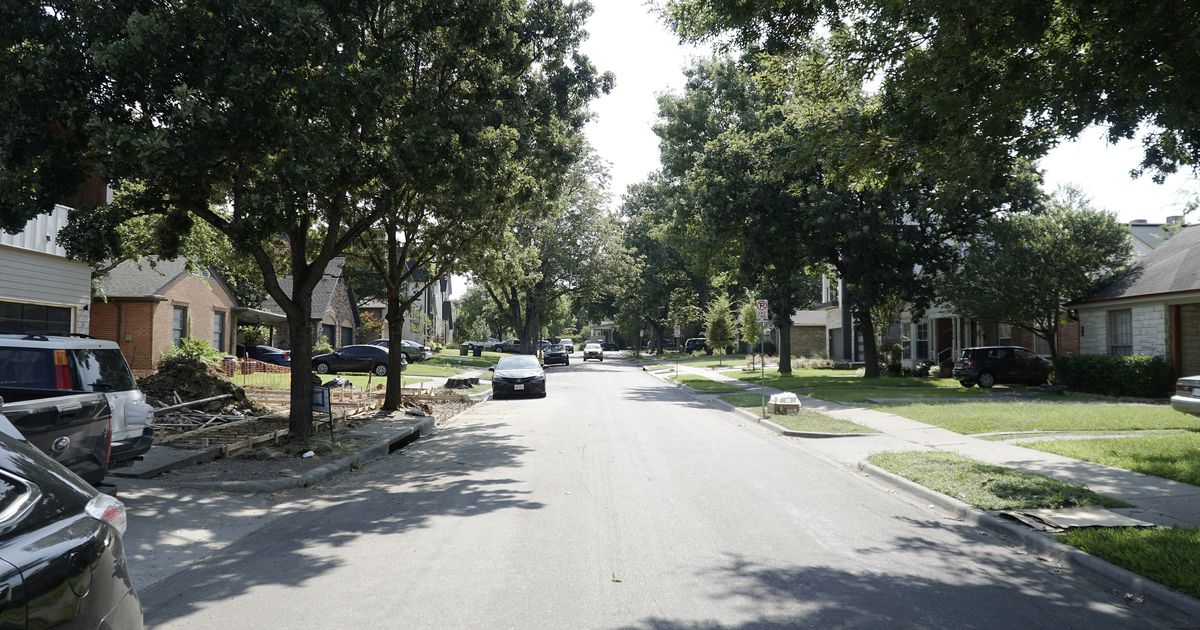How are Dallas’ neighborhood boundaries determined? Curious Texas investigates
Ask any two Dallas residents where the boundaries of a neighborhood start and end and you might get different answers. Because of this, some readers have asked Curious Texas what the boundaries between different boroughs such as Lower and Lowest Greenville are and where to find an official map. Various organizations in Dallas have their own neighborhood maps. For example, the Dallas Police Department and the Dallas Morning News both use their own maps of the city to determine where the events took place, and some residents are likely to disagree. The city has nearly 400 neighborhoods, according to buildingcommunityWORKSHOP, a nonprofit that works with residents and historical associations to create a complete map of the parishes of Dallas. Is there an official limit for each neighborhood? Only for those designated by the residents and registered with the city, according to the Dallas Department of Planning and Urban Design. A neighborhood organization – a group of residents registered with the city under a neighborhood name – can set its own boundaries and can vary widely in size and scope, the department said. The city also recognizes homeowners associations as their own boundaries, although HOAs are legal entities registered with the state of Texas and typically created by the property developer to set regulations for residents, according to Peer Chacko, director of the planning department. It’s not uncommon for these neighborhoods to overlap, where certain areas have competing organizations, which is a normal part of a democratic process, Chacko said. Dallas residents are unlikely to find an official city map for the foreseeable future without this overlap; the city is not interested in solving them, said Chacko. “The city is trying to stay out of such discussions,” said Chacko. “I don’t think any organization wants the city to intervene when it comes to issues like this.” That’s not to say that neighborhoods aren’t important. In Houston, “super-neighborhoods” are collections of city-approved neighborhoods that have a vote on the Houston City Council. Dallas also conducts neighborhood assistance and communicates with specific groups about policies or messages that may affect them, Chacko said. While not every part of the city is within a neighborhood organization, the city tries to identify areas that have historically been overlooked and encourages residents of those areas to form their own community organizations, Chacko said. In West Oak Cliff, an area where there are no organizations, the city helped establish them. East Hampton Hills is another such area; the city recognized in the spatial planning process that there was no official communication channel with the residents. Starting a neighborhood organization offers additional benefits. A neighborhood is often a unit that is ideal for organizing against undesirable land developments or for advocating a specific policy within the government. Neighborhood organizations can also register for legal charitable status and manage their own funds. “For the people who go out of the way to organize and usually meet regularly and promote communication, I wouldn’t be surprised that people feel some kind of responsibility for it,” Chacko said. While many people refer to Upper Greenville as another neighborhood, the only areas that neighborhood organizations form are Lower Greenville and Lowest Greenville West, both on opposite sides of Greenville Ave. According to the city, Lower Greenville runs east along Skillman Street Mockingbird Lane to Ross Avenue. Lowest Greenville is bordered by Belmont, Henderson, and Ross Avenues. These areas are also unique in that much of them include businesses as well as residential areas. Other locations, such as Preston Hollow (connected to Royal Lane, Hillcrest Road, Midway Road, and West Northwest Highway) and Oak Cliff (which runs from Lyndon B. Johnson Freeway to I-30) were once parishes that annexed the city of Dallas. When they became part of the city, they retained much of their original boundaries. Many organizations have tried to make their own neighborhood maps. The buildingcommunityWORKSHOP regularly conducts community surveys and neighborhoods research to map each neighborhood within a specific boundary. “In Dallas, where so much gentrification and development is happening, there is concern that people are depriving residents of the power to define these boundaries or to rename a place,” said Lizzie MacWillie, director of urbanism at buildingcommunityWORKSHOP. In some U.S. cities, the government is playing a much more active role in dividing the city into official units that allow for greater localization, Chacko said. MacWillie notes that Dallas is unique because of its urban sprawl and the sheer number of neighborhoods that have formed organically and through annexing cities rather than planned development. “There’s no set method of determining what a neighborhood is,” said John Slate, Dallas city archivist. “Borders are mostly arbitrary and usually tie back to the people who created them.”
What should we answer next?
Tell us
What do you wonder about the culture, people, and institutions of North Texas – and the rest of our great state? Help us research stories that matter to you. No question is too big or too small. Let’s begin. Visit this link to ask your question and vote on which questions we should answer.
[ad_1]


